If you’re reading this post, you are thinking about potty training your child! Congrats on approaching this milestone! I am not a potty training expert, but I have potty trained both my kiddos, one as recently as a month ago — and many of you asked me for help on this topic. So while this info is fresh in my mind, I wanted to share it with you!
My hope for you with this article is that you will go into potty training feeling as informed and prepared for the process as possible. This article will not tell you the exact steps of what to do because each child is unique and will require you and them working together to figure out what works best for them. It will support and guide you in things to think about so that you can make the choices that are best for your child and you.
The biggest and best advice I can offer is to potty train when your child is showing signs of readiness and when you can devote the time and energy to being a supportive, encouraging, and forgiving guide.
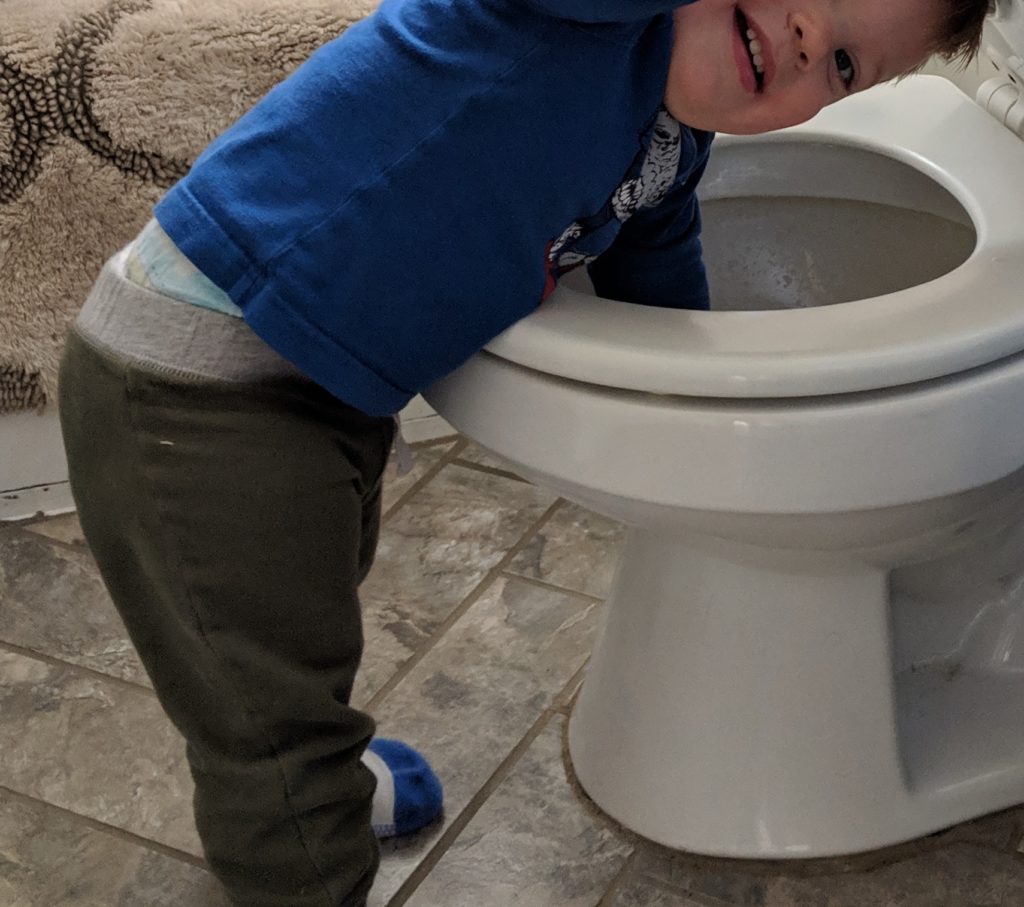
Things to Consider About Potty Training
When I first potty trained my oldest kiddo, I was super excited to be done with diapers. I looked up the fastest method, and went for it! And for the most part we were successful. With my youngest, the fast method was a disaster and led to poo-withholding. There is a lot to take into account to help determine when and if your child is ready, and when and if YOU are! Here are some things to think about.
- Your child’s readiness:
If you child is fearful or resistant, sometimes the best thing you can do is take a step back and try again in a couple months. Like the old adage says, you can lead a child to the toilet but you can’t force them to pee or poo. That’s how it goes, right? See the chart below for signs of readiness. - Your readiness:
You have to be “on”. Your children most likely will not tell you that they need to use the bathroom (aka they will soil themselves unless you do something about it) when they are learning to potty train, so you’ll need to be ready to give them your full focus, look for their signs of needing to go, and tell them when it’s time to try. - All things pee and poo:
You will be talking about pee and poo even more than you were before, and your child will be more interested in you doing the doo than even before. Get ready to get comfortable with your own bodily functions as your kiddo may want to watch and learn from the expert: You! - Time-consuming:
Initially, potty training can add more to your routine. You will want to make sure you child uses the toilet before leaving the house, and in the early days you will also want to have them use the toilet upon arrival at your destination as well. You may choose outings based on where there is a toilet available, or you can bring a portable one like this in your car. - Keep an eye on the clock:
A good rule of thumb is to take your child to the bathroom once an hour until to you and your child get a better understanding of how long they can hold their pee and poo. If an accident happens, it’s usually because parents forgot to stick with a short window in between toilet visits. - Mess:
Some kids have very few accidents on furniture and rugs, and others pee and poo just about anywhere, leading to pretty gross messes. It may be a good idea to pull up and put away rugs and to use puppy piddle pads on couches and chairs. - Child’s growing independence:
Toilet training often coincides with the terrible twos or the “threenager” years. Your child may be excited to use the toilet initially, but often the potty loses its appeal after a few days, and you may experience some toddler-typical resistance. Go into potty training knowing that some tantrums are inevitable. Keep going, you can do it! - Not-so-empty diaper bag:
You may get to leave the diapers out of your bag (wahoo!!!), but now you will fill it with extra undies and changes of clothes, at least in the beginning. - Accidents happen:
Your child is learning a skill that they never knew they needed. From birth they have peed and pooed as it came out, without much thought. As they got older they have become more aware of their body’s function, but they may not be in control of it yet. Plus, playing or reading is so much more fun than stopping to get up and use the toilet. This is where the parent’s awareness of the clock is super helpful. Please do not punish a child for an accident. Instead offer a gentle reminder that the toilet is where we pee and poo, and involve them in helping clean up the mess (at an age-appropriate level). - It’s a process:
Potty training usually is a long-haul effort. Your child may ‘get it’ pretty quickly, but it will likely be months or longer until you no longer need to be on top of them to use the toilet. Some kids are able to take it on all by themselves pretty quickly, but that’s the exception. - Celebrate:
Kids love to celebrate everything, and potty training is the same! Cheer them on, create celebratory dances, whatever you think will work with your kiddo! We used a sticker chart as well as small chocolate candies to encourage potty training successes.
Signs That Your Child is Ready to Potty Train
In order for your child to be ready to potty train they will need to be capable of several things.
If you answer YES to at least three of these five questions, there’s a good chance you child is ready!
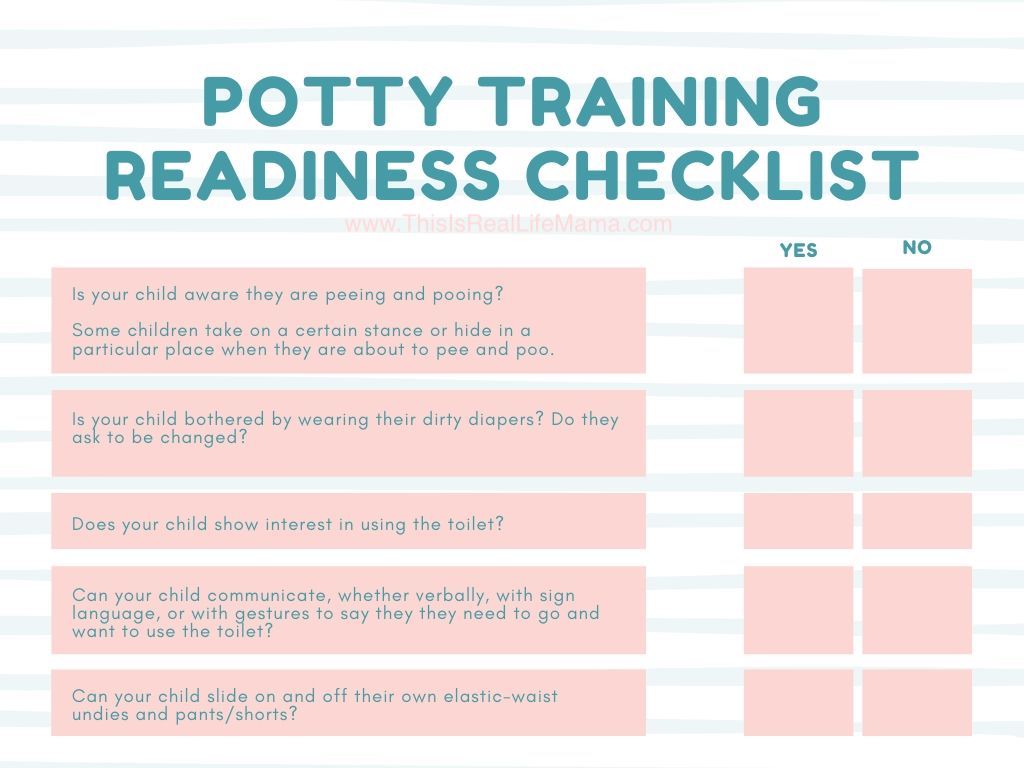
Which Potty Training Approach is Right for You?
Here is a summary of the three main approaches. You and your child will need an approach that is best suited to your and their personalities and temperaments. You may even find you use a combo of the methods.
Fast and Furious: The Three-Day Method
The basic premise is this — you remove the option of a diaper or training underwear, and your child will learn to use the toilet.
The first stage your child is naked and you have the potty nearby and at the ready.
When they master that stage you move on to clothed, but without underwear. The idea here is that undies press on the body in a similar way to a diaper and may inspire muscle memory encouraging the child to pee and poo in their undies by accident. Once the child is accident-free while clothed without underwear, you can attempt some outings.
When that stage is complete, you move on to underwear and clothes.
Some quick methods suggest attempting night-training during this time as well.
Slow and Steady: Over a couple of months
To do this method you utilize a training pant or pull-up so that the child can get into the groove of using the toilet while not being at risk of accidents.
You tell your child to use the toilet when they wake up and instead of putting a new diaper, you put a training pant or pull-up. Throughout the day you check in with them to see if they feel like they need to pee or poo.
You encourage toilet use, but you also are okay if sometimes they use their training pants. If you see a signal that they are about to pee or poo, you may move them to the toilet and celebrate a success.
This approach is less stressful or intense than the quicker method, but it does take longer, so you need to have the desire to keep going for months.
Some parents start with this method to figure out what works best for their child and then when the moment is right, they switch over to the faster method.
Wait and See:
Many wise parents of adult children have shared the sage advice that your children will potty train without any effort or formal support from you when they’re good and ready.
If you’re big on letting your kid learn things on their own, and you don’t mind that your child may not make the switch from diapers to toilet until they are 4 or older, then this approach may be for you.

Common Obstacles in Potty Training and What You Can Do
Your child will use the small potty but won’t use the big toilet
Many children grow in comfort using their small potty but don’t like using the real toilet at home or out.
Sometimes it’s helpful to turn the child backwards on the toilet where they face the tank and can hold on to it.
Other kids benefit from having a stool to rest their feet on so they don’t feel like they will fall in.
In public restrooms, the automatic flush can scare some children. Having a little pack of sticky notes on hand and covering the sensor can save you from the surprise flush scare!
Your child will not poop on the toilet
If your child is withholding their poop, it can be very dangerous for their little systems and it can stretch out their insides.
Many children develop a fear of pooping from one challenging and painful poop. They decide then that pooping on the toilet hurts and they will do all they can to not poop on the toilet.
Your child may be able to hold it quite long, even in their undies, but once enough is backed up an accident happens. They feel bad, you feel mad, and it’s a recipe for disaster.
My biggest advice here is DO NOT FORCE THE ISSUE. Do not punish them for holding it until they have an accident.
Go back to diapers or pull-ups until they are pooing regularly in those again, and then wait a little longer still. Then try again.
And make sure they are hydrated and/or eating constipation-relieving foods like prunes, apples, pears, and juice so that their bowel movements are soft and swift.
Tantrums about going to the bathroom when you say to
Like I said above, toilet training coincides with some challenging years of independence-seeking: the terrible twos and the threenagers. So tantrums will be a part of the process.
If you’re child is tantrumming a lot you can look at what reward structure may work for them: candies, sticker chart, treasure box, etc.
Another tool that’s helpful is to create a visual routine chart or visual reminders so that “you” aren’t telling them what to do, the visual aid is. These are what we have used in our household.
Suddenly having more accidents
This can happen when a child is going through big life changes like a new sibling, a new home, childcare provider change, stress at home, etc.
It also can happen for what appears to be no reason.
Either way, it can be very frustrating and confusing for you, and it may be easy to act mad towards your child.
Try your best to keep your cool, involve your child in the mess cleanup, and figure out the best way you can be helpful to them.
You may need to go back to a schedule for toilet visits such as every two hours, or you may need to look at a reward system until your child gets through the regression.
Usually regressions do not last long. If you are afraid there may be a medical issue, or if you think your child may have experienced sexual abuse, please contact your child’s doctor.
I hope you find this article helpful in your path to potty training your child! If you have any more questions, comment down below!
If you’ve already been through it, what tips and tricks do you have to share? Comment below!
Other articles you may find helpful:

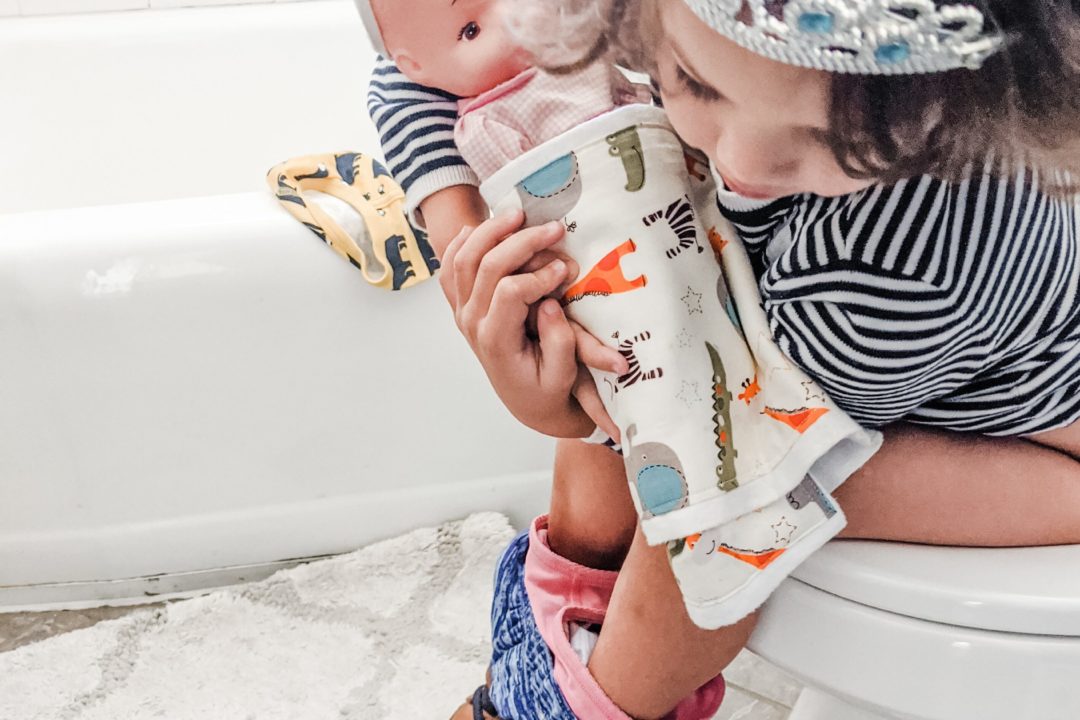
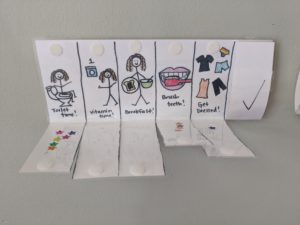
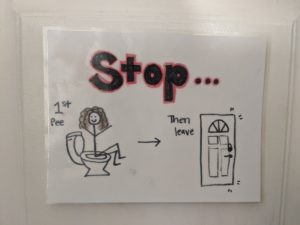
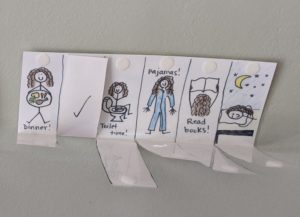
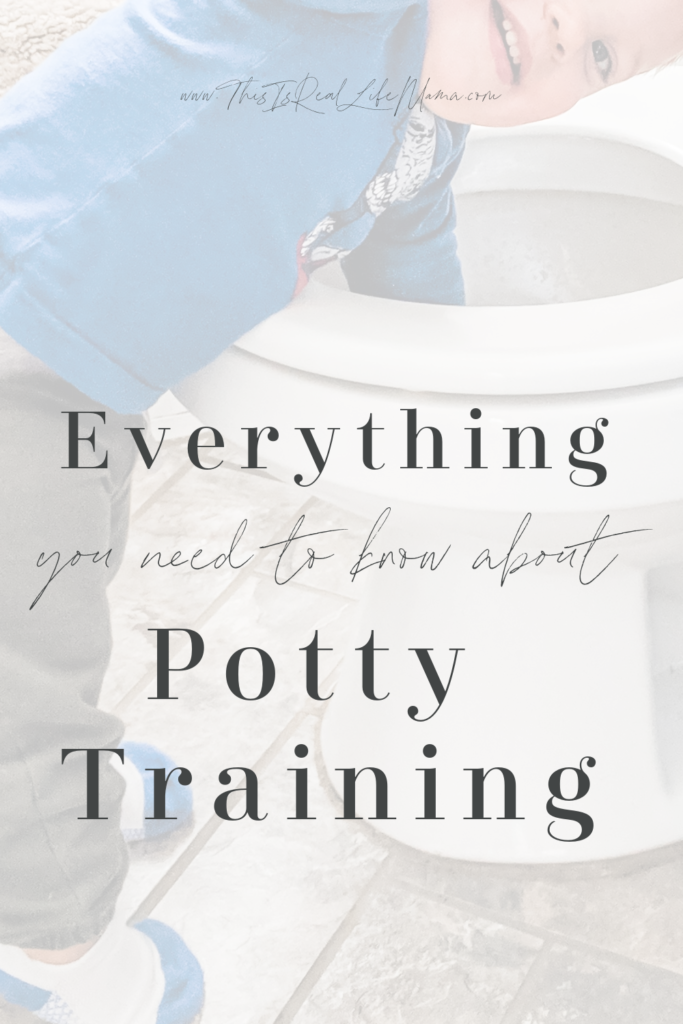
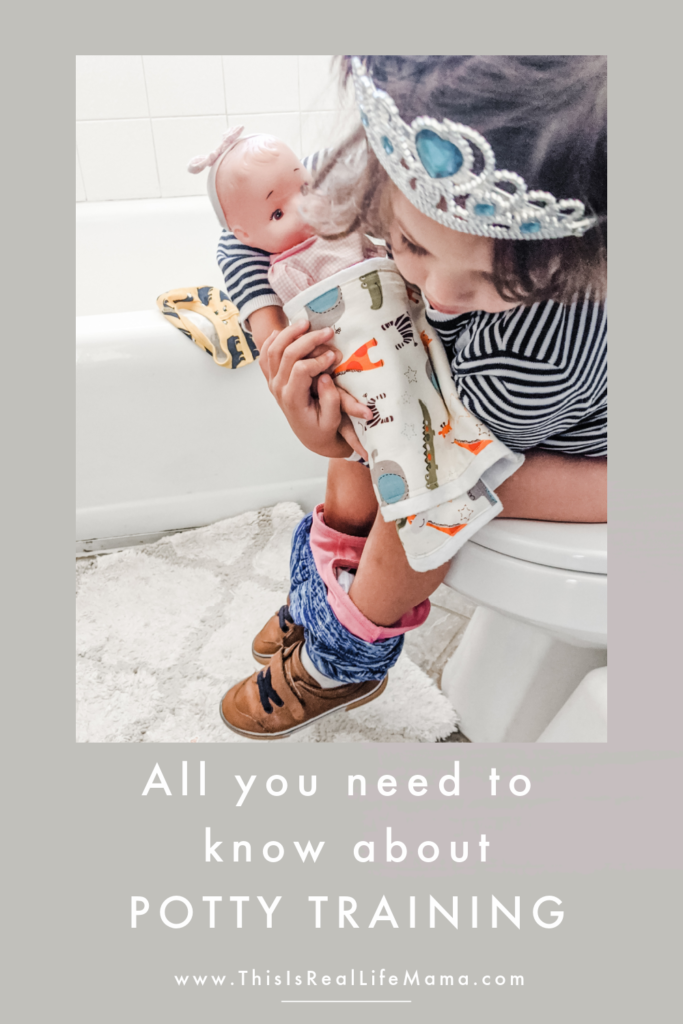
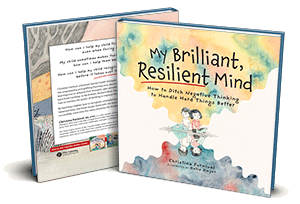
We folLowed the advice that Christina provided for our 2.5 year old daughter and it was so helpful! She loved having a chart to put stickers on and a little sweet treat reward helped too. Not wearing pants was helpful for us because we were able to catch her in the act the first day when she was still a little confused. I also ordered her a seat for the regular potty with a step stool and she really liked going on that better than the mini potty because she likes to do whatever we do! We are now on day 4 and I feel like she has the hang of it!